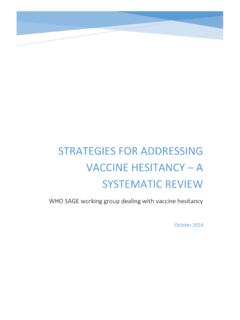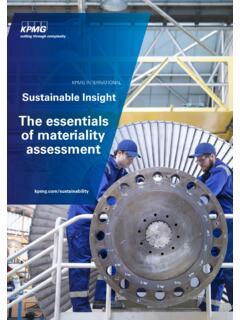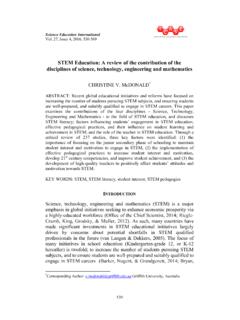Transcription of Four Decades of Research on School Bullying
1 Four Decades of Research on School BullyingAn IntroductionShelley HymelUniversity of British ColumbiaSusan M. SwearerUniversity of Nebraska Lincoln and Born This WayFoundation, Los Angeles, CaliforniaThis article provides an introductory overview of findingsfrom the past 40 years of Research on Bullying amongschool-aged children and youth. Research on definitionaland assessment issues in studying Bullying and victimiza-tion is reviewed, and data on prevalence rates, stability,and forms of Bullying behavior are summarized, setting thestage for the 5 articles that comprise thisAmerican Psy-chologist specialissue on Bullying and victimization.
2 Thesearticles address Bullying , victimization, psychological se-quela and consequences, ethical, legal, and theoreticalissues facing educators, researchers, and practitioners,and effective prevention and intervention efforts. The goalof this special issue is to provide psychologists with acomprehensive review that documents our current under-standing of the complexity of Bullying among School -agedyouth and directions for future Research and : Bullying , victimization, School violenceSchool Bullying has been around for as long asanyone can remember, featured in Western litera-ture for over 150 years ( , Charles Dickens sOliver Twist[Dickens, 1839/1966]; Thomas Hughes sTomBrown s School Days[Hughes, 1857/1892]).
3 Today, bul-lying permeates popular culture in the form of reality TVand violent video games, and in our free-market, capitalistsociety. In contrast, empirical Research on Bullying is arelatively recent focus, the earliest studies emerging in the1970s in Scandinavia (Olweus, 1978). In North America,public concern about School Bullying increased dramati-cally in the late 1990s, owing in large part to the tragicdeaths of our youth by suicide (Marr & Fields, 2001) ormurder, especially the 1997 murder of Rina Virk (Godfrey,2005) and the Columbine massacre in 1998 (Cullen, 2009).
4 Since then, Bullying has received unprecedented attentionin the media and in academia, both nationally and interna-tionally ( , Jimerson, Swearer, & Espelage, 2010; Smith,Pepler, & Rigby, 2004; Swearer, Espelage, Vaillancourt, &Hymel, 2010), and remains a significant concern amongparents and educators. Inspired by the 2011 WhiteHouse Conference on Bullying , hosted by President andFirst Lady Obama and the Department of Education, thisspecial issue was undertaken, inviting recognized scholarsto critically review current Research and theory on schoolbullying, in an effort to inform future Research and , we describe some of what we have learned over thepast 40 years, setting the stage for the five articles thatcomprise this special Is Bullying and How Do WeAssess It?
5 Following the pioneering work of Olweus (1978, 1999,2001), Bullying has been defined as a subcategory of inter-personal aggression characterized byintentionality,repeti-tion, and animbalance of power, with abuse of power beinga primary distinction between Bullying and other forms ofaggression ( , Smith & Morita, 1999; Vaillancourt,Hymel, & McDougall, 2003). Scholars generally endorsethese characteristics, as does the Centers For DiseaseControl (Gladden, Vivolo-Kantor, Hamburger, & Lump-kin, 2014 ), the american psychological association (Van-denBos, 2007), and the National association of SchoolPsychologists (2012).
6 However, assessments of Bullying donot always emphasize these components (see Hamburger,Basile, & Vivolo, 2011,Compendium of AssessmentTools), making distinctions between Bullying and otherforms of aggression less clear (see Rodkin, Espelage, &Hanish, 2015). Moreover, children s descriptions of bully-ing rarely include these definitional criteria (Vaillancourt etEditor s article is one of six in the School Bullying andVictimization special issue of theAmerican Psychologist(May June2015).)
7 Susan M. Swearer and Shelley Hymel provided the scholarly leadfor the special Hymel, Department of Educational and Counsel-ling Psychology and Special Education, University of British Columbia;Susan M. Swearer, Faculty of Education, Department of EducationalPsychology, University of Nebraska Lincoln. Shelley Hymel and SusanM. Swearer are Co-Directors of the Bullying Research Network ( ).The authors wish to acknowledge the support received for this work,including support to the first author from the Edith Lando CharitableFoundation, the University of British Columbia Faculty of EducationInfrastructure Grant, and the Canadian Prevention Science Cluster, fundedthrough the Social Sciences and Humanities Research Council of Canada,and support to the second author from the Andrew Gomez Dream Foun-dation, the Woods Charitable Fund.
8 And the College of Education andHuman Sciences at the University of Nebraska at concerning this article should be addressed to ShelleyHymel, Faculty of Education, University of British Columbia, 2125 MainMall, Vancouver, BC, V6T 1Z4 or Susan M. Swearer, 40 Teachers CollegeHall, Department of Educational Psychology, University of Nebraska Lin-coln, Lincoln, NE 68588-0345. E-mail: or June 2015 american Psychologist 2015 american psychological association 0003-066X/15/$ 70, No. 4, 293 299 , 2008), leading many researchers to provide definitionsof Bullying in their debate exists regarding the best method andinformant for assessing Bullying and victimization ( ,Cornell & Cole, 2012; Swearer, Siebecker, Johnsen-Fre-richs, & Wang, 2010), with measurement issues heraldedas the Achilles heel of Bullying Research (Cornell, Sheras,& Cole, 2006).
9 Although some suggest use of multipleinformants to establish psychometric adequacy ( , Ju-vonen, Nishina, & Graham, 2001), the reality of assessinga complex, underground behavior involving multiple par-ticipants and influenced by multiple factors is that theremay be no single gold standard for accuracy. Bullyinghas been assessed via parent, teacher, and peer reports, aswell as direct observations, but most rely on self-reportassessments, despite concerns about biases related to socialdesirability, self-presentation, and/or fear of retaliation(Pellegrini, 2001).
10 Self-reports are economical and effi-cient, and give youth a much-deserved voice in the assess-ment process, tapping perceptions of both victims andperpetrators. Although more time consuming, peer assess-ments are viewed as an alternative to self-reports ( ,Cornell & Cole, 2012), especially given observational ev-idence (Pepler, Craig, & O Connell, 2010) that peers arepresent in at least 85% of Bullying incidents. Based oninformation from multiple informants, peer assessmentscan provide unique information about Bullying .















